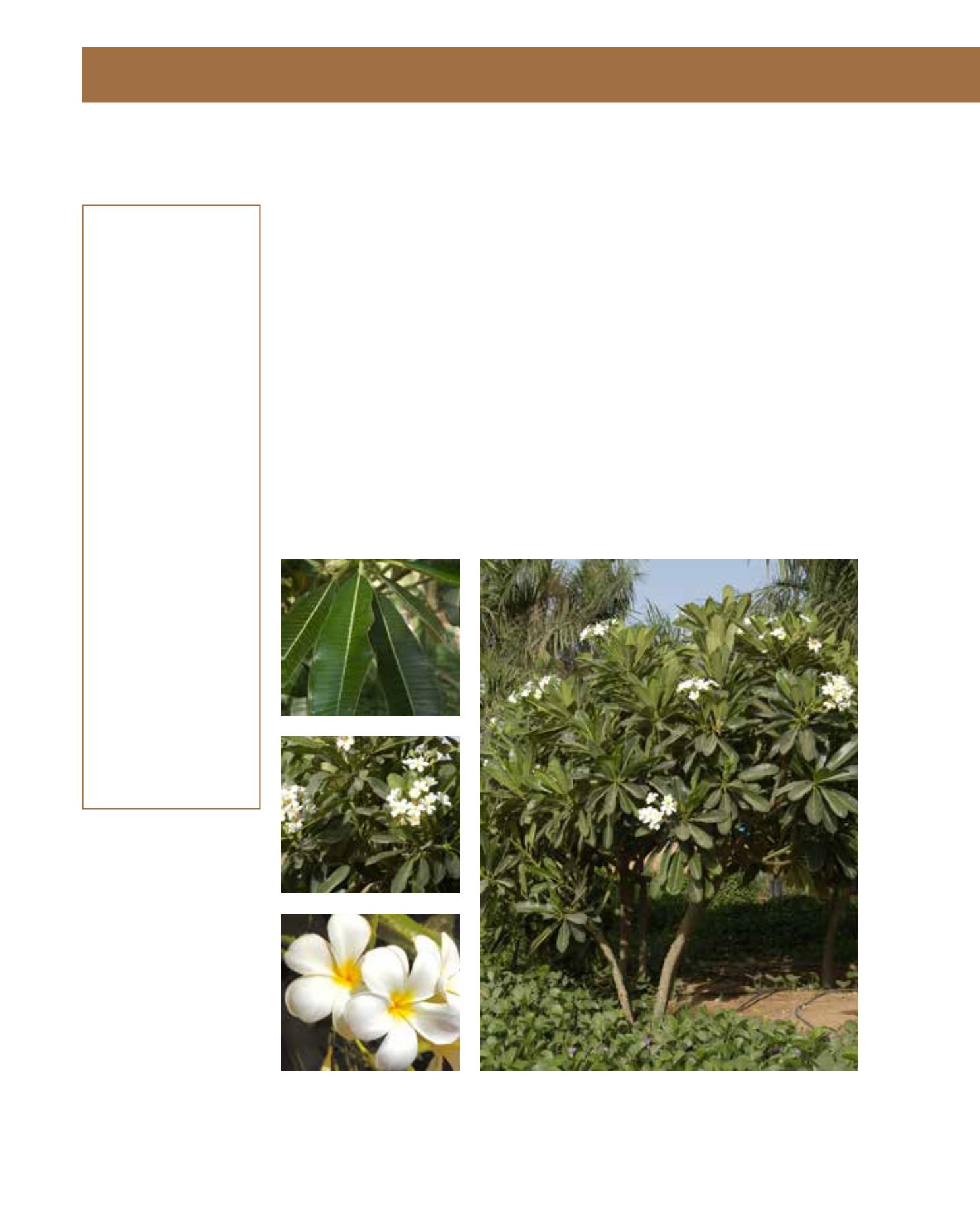

GENERAL
Origin
:
sub-tropical,
tropical
Vigour
:
fairly fast
growing
Humidity
:
semi-arid, semi-
humid, very
humid
Propagation :
sowing and
pricking out,
cuttings
Maintenance :
moderate
CONDITIONS
Urban climate :
resistant
Dessication :
vulnerable
Stagnant water :
vulnerable
Irrigation
:
high
Salinity/ppm :
low (600 ppm)
Hardiness
:
-3°C
SHAPE
Type
:
shrub, tree
Height
:
4 m-8 m
Spread
:
4 m-6 m
Foliage
:
semi-evergreen
FLOWER
Colour
:
white, yellow
Size
:
5 cm - 7 cm
Period
:
June - November
Smell
:
scented, strong,
pleasantly
scented, flower,
sweet
FRUIT
Type of fruit :
capsule
Fruit size
:
2 cm
Toxicity
:
highly poisonous
In warm, protected sites, this shrub retains its leaves, while they are usually shed in Arriyadh’s
winter and sometimes succumb to frost. Although called Singapore Plumeria, the species origina-
tes from central America including the Bahamas and the Lesser Antilles. Nowadays, it is widely
spread throughout tropical climates where temperatures do not drop below 4°C. In some regions,
it is also called Temple Tree, and in fact it might reach a height of 8 metres with a width of 6
metres fairly quickly, and is easily trained as a standard if the strength of the trunk is sufficient
to bear the weight of the crown. Irregular in shape. it will eventually develop an umbrella-like
canopy. The leaves are leathery, dark green and shiny. reaching some 25 cm in length and are
obovate in shape. They are arranged spirally around the green branches. From June to November,
strongly scented flowers enchant garden owners or passers-by. They are white with a yellow throat,
measuring up to 7 cm across. Singapore Plumerias grow in locations varying from full sun to
semi-shade, and should be protected against strong, drying winds. Although deriving from the
humid tropics, they tolerate low air humidity fairly well. They do not stand drought for long, and
are vulnerable to waterlogging. The best soils are well drained and fertile, with high levels of hu-
mus, and frequent irrigation. Cuttings from the fleshy stems root easily in a mix of compost and
coarse sand. Any injury causes white sap to be exuded, which is toxic and may irritate the skin.
239
Plumeria obtusa,
Apocynaceae
Singapore Plumeria,
Lirio de la Costa, Temple Tree
















